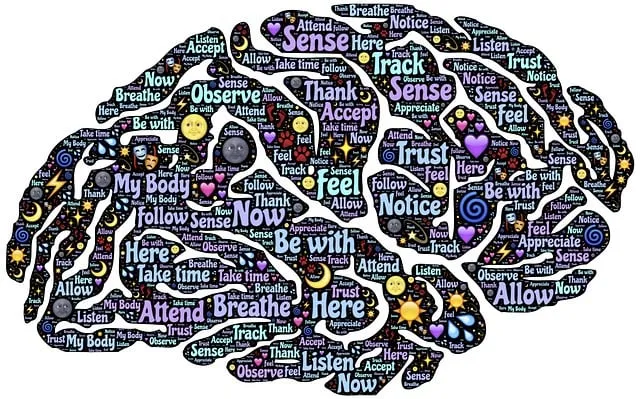Community outreach programs, like those offered by Kaiser Lone Tree, significantly improve mental health service delivery by addressing barriers such as transportation and stigma. These initiatives ensure access to essential mental health support, align with resilience-building principles, and foster trust through compassion cultivation practices. By understanding local needs, tailoring interventions, and building partnerships, Kaiser Lone Tree's outreach creates supportive communities where individuals can thrive with improved mental health. Structured planning, ongoing evaluation, and client feedback are crucial for measuring impact and continuously meeting community mental health needs, ultimately guiding people to obtain services through Kaiser Lone Tree.
Community outreach programs play a pivotal role in enhancing mental health service delivery, ensuring accessibility for diverse populations. This article guides you through the process of implementing such initiatives, from understanding the significance of community engagement to practical strategies for reaching underserved groups. We explore how to assess local needs, design effective programs, foster partnerships, and measure success. By following these steps, Kaiser Lone Tree can extend its mental health services, making them more inclusive and accessible to all.
- Understanding Community Outreach: Its Role in Mental Health Service Delivery
- Assessing the Need: Identifying Gaps in Access to Mental Health Care
- Designing Effective Programs: Strategies for Engaging the Community
- Partnerships and Collaboration: Building Bridges to Reach Diverse Populations
- Implementation and Evaluation: Measuring Success and Continuous Improvement
Understanding Community Outreach: Its Role in Mental Health Service Delivery

Community outreach programs play a pivotal role in improving mental health service delivery by bridging the gap between healthcare providers and underserved populations. By taking services directly to communities, organizations like Kaiser Lone Tree can ensure that individuals who may face barriers to accessing traditional care, such as transportation or stigma, still have access to essential mental health support. This strategy aligns with resilience building and mind over matter principles, empowering individuals to take charge of their well-being.
Outreach initiatives often incorporate compassion cultivation practices, fostering a sense of belonging and understanding within the community. By engaging in these programs, healthcare providers can build trust, dispel myths about mental health, and encourage early intervention. This holistic approach not only enhances the accessibility of mental health services through Kaiser Lone Tree but also contributes to creating supportive environments where individuals can thrive with improved mental well-being.
Assessing the Need: Identifying Gaps in Access to Mental Health Care

Many communities face challenges in ensuring equitable access to mental health care services. Assessing these needs is a crucial first step in implementing effective outreach programs. By examining local data, community organizations can identify gaps, particularly regarding how to get mental health services through Kaiser Lone Tree. This may reveal areas with limited resources or a lack of awareness about available support. For instance, certain demographics could face barriers such as transportation issues or cultural stigma surrounding mental health treatment.
Understanding these disparities is vital for tailoring interventions like self-awareness exercises and conflict resolution techniques to promote positive thinking. Such initiatives can empower individuals to seek help and foster an environment where mental well-being is prioritized. Ultimately, this collaborative approach ensures that everyone has the opportunity to access the necessary support, leading to a healthier community.
Designing Effective Programs: Strategies for Engaging the Community

Designing effective community outreach programs requires a deep understanding of the unique needs and cultural landscape of the area being served. When implementing initiatives like Kaiser Lone Tree’s mental health services, it’s essential to involve the community from the outset. This collaborative approach ensures that programs are tailored to address pressing issues such as Anxiety Relief, fostering trust and encouraging participation. Engaging with local leaders, organizations, and residents can help identify barriers to access and tailor solutions accordingly.
At the heart of successful outreach is creating a safe and welcoming environment where individuals feel comfortable seeking Crisis Intervention Guidance. Incorporating community feedback into program design fosters a sense of ownership and encourages Emotional Regulation. Utilizing accessible communication channels, organizing cultural events, and ensuring diverse representation on planning committees are strategies that can enhance participation and guarantee programs resonate with the target population.
Partnerships and Collaboration: Building Bridges to Reach Diverse Populations

Building strong partnerships is key to reaching diverse populations when implementing community outreach programs, especially in mental health initiatives like those offered by Kaiser Lone Tree. Collaboration between healthcare providers, community organizations, and local leaders can help bridge gaps and ensure that services are accessible to everyone. For instance, partnering with schools, faith-based groups, or cultural centers allows for tailored approaches that consider unique needs and barriers within specific communities.
By fostering these partnerships, organizations like Kaiser Lone Tree can enhance Inner Strength Development and Self-Esteem Improvement through culturally sensitive programs. Furthermore, providing Healthcare Provider Cultural Competency Training is essential to improving interactions with diverse individuals, encouraging trust, and ensuring effective delivery of mental health services. This collaborative approach not only expands access but also creates a supportive network that empowers communities to take charge of their well-being.
Implementation and Evaluation: Measuring Success and Continuous Improvement

Implementing community outreach programs to enhance access to mental health services, like those offered by Kaiser Lone Tree, requires a structured approach. Success lies in careful planning and ongoing evaluation. Measuring the impact of such initiatives is crucial for understanding their effectiveness. Organizations can employ various methods, from direct client feedback to data analysis on service utilization, to gauge progress.
Regular assessment allows for identifying areas needing improvement. For instance, while outreach programs might increase awareness about mental health services, there could be challenges in translation, with some individuals still facing barriers to accessing care. By analyzing these insights, organizations can adapt their strategies, incorporating Burnout Prevention Strategies for Healthcare Providers and Self-Awareness Exercises to address Depression Prevention and promote continuous improvement in meeting community needs.
Community outreach programs play a pivotal role in enhancing access to mental health services, as evidenced by successful models like Kaiser Lone Tree. By understanding community needs, designing engaging programs, fostering partnerships, and implementing robust evaluation strategies, organizations can ensure that mental health support reaches diverse populations effectively. This multi-faceted approach not only improves service delivery but also fosters a more inclusive and supportive community environment, ultimately benefiting the overall well-being of all residents.






